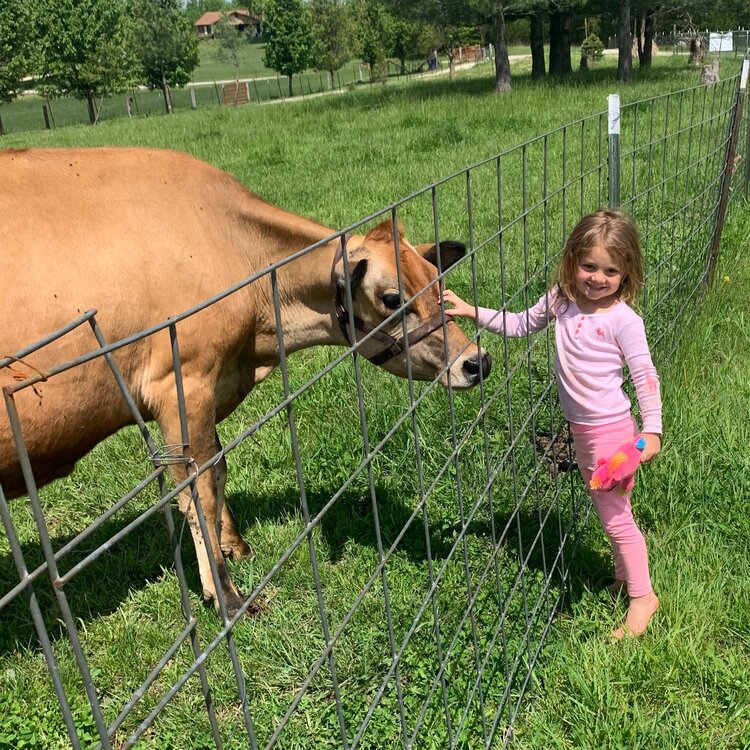Fresh Clean Grass Fed Raw Milk - Our Process
posted on
April 7, 2025
START WITH HEALTHY ANIMALS
We start with high-quality, registered, healthy animals where we know the entire history of the animal. The picture below is Sharona. She is a two-year-old cow we purchased from a Grade A Raw Milk Dairy in Missouri. She gives us about 4-5 gallons per day.
We blood test our cattle annually to assure we have the healthiest disease free animals and we also vaccinate for zoonotic diseases as part of our safe protocols.

GRASS-FED CLEAN PASTURES
Grass-fed pastures make the healthiest and cleanest milk. Milk has more vitamins and minerals when animals are allowed to eat grass. We rotate our animals on pasture so they get fresh grass weekly. Keeping animals out of mud and manure helps keep udders clean and avoids contamination. We feed hay during the winter periods when grasses are not actively growing.
CLEAN PROTOCOLS
Machine milking creates a closed system that produces cleaner milk. Human hands don’t touch the milk and you don’t have the chance of little bits falling into the milk as in hand milking where hairs, dirt, or even manure fall into buckets. We use inline filters that allow us to inspect the filter after milking to assure a clean process. Filters can also indicate potential issues that can be mitigated before they become problems.
COLD AND CLEAN
Milk needs to be cooled fast. Milk comes out of the cow above 100 degrees. It needs to get cool as quickly as possible. Putting the milk in the freezer immediately after milking has proven to be unacceptable. Bacteria doubles every 20 minutes above 60 degrees, and It takes more than 4 hours to get milk under 60 degrees in the freezer. We put milk bottles in ice water which drops the milk temperature below 40 degrees in under an hour with ease. Quick cooled milk is clean milk.
THE FINAL CLEAN - WE MEASURE
Things happen on a farm. Sometimes the Milker falls off or gets loose, a helper doesn’t follow the clean protocol, a step is inadvertently skipped, a damaged part can draw in dirt, etc.. Sometimes it’s not possible to know something went wrong.
This is why we test our milk each time we bottle. Before we sell the milk. To date, we are the only farm that tests milk BEFORE its sold. Other farms that test monthly can only recall bad milk. By that time you already drank it.
We purchased lab equipment so that we can perform coliform and aerobic plate counts (APC) right on the farm. We take a sample out of the milk bottle, so we know we are not only testing the cow, but we are also testing the milker, the bottling process, and really our overall sanitary practices. This assures that each bottling of our raw milk falls within the coliform and APC standards for low-risk foods as defined by USA food safety experts. Our testing results for coliform and aerobic plate counts are less than half the allowable FDA standards for commercial factory dairies. We are not required to test our milk. We do this to protect our customers. We drink what we sell.
FINAL STEP
The last step after testing is one of my favorite parts. We drink the milk. We really are not trying to prove anything with this last step. Our family, just like yours, enjoys fresh clean raw milk and testing simply confirms what we already know.
OUR MENTOR
https://www.rawmilkinstitute.org
We do need to give some credit here though. We are getting expert help from the Raw Milk Institute.



